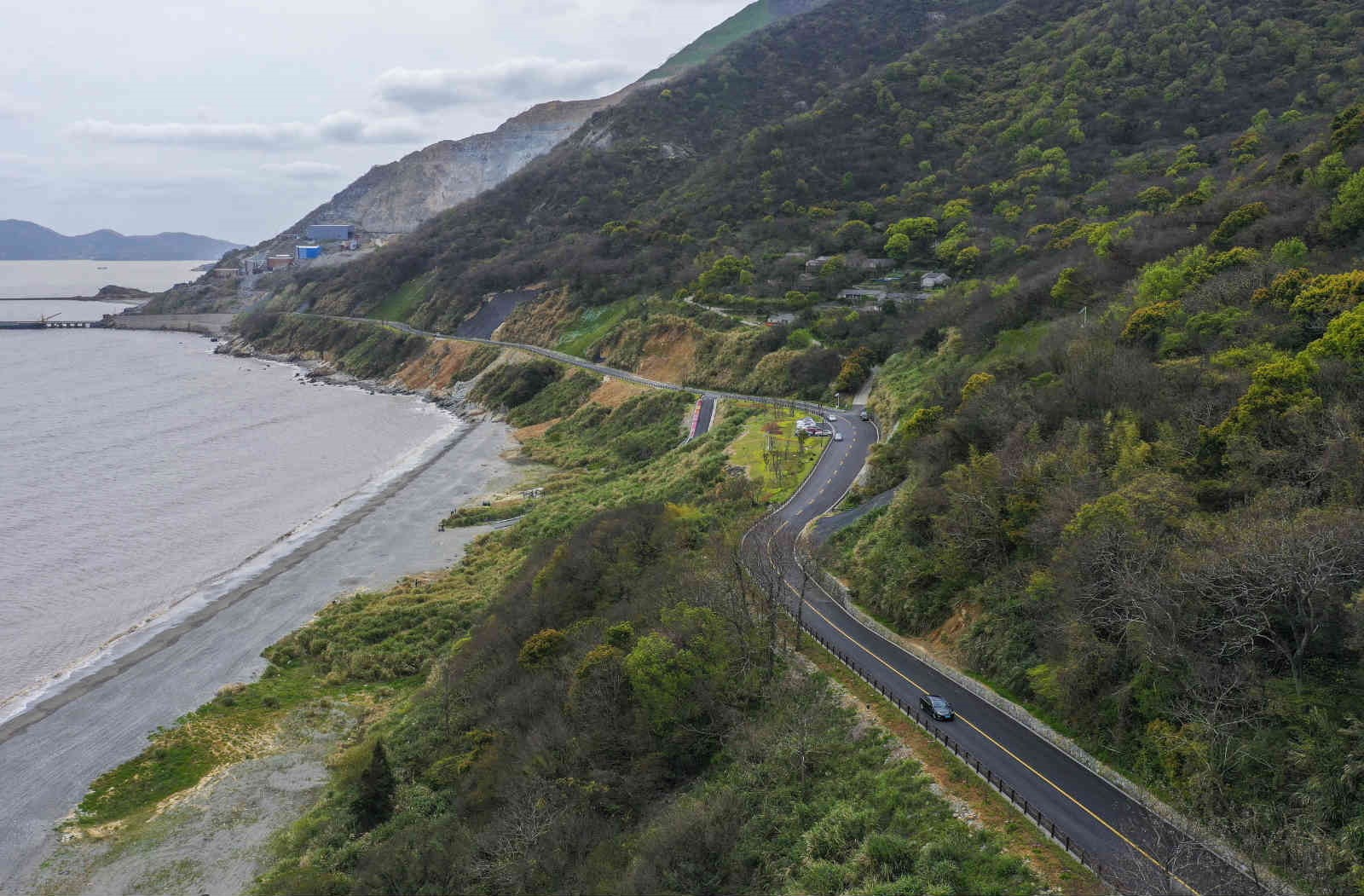

 |
| Tourists drive on the Luomen-Tangtou highway, Putuo District, Zhoushan, east China’s Zhejiang province, to appreciate the scenery along the route, April 5. (By Zhang Lei, People’s Daily Online) |
Putuo District, Zhoushan, east China’s Zhejiang province, has made great efforts to pursue a more environment-friendly development in recent years.
Such efforts could be seen from the mangroves planted in the mudflats beside the district’s Shenjiamen port.
As the mangroves can purify the seawater, prevent wind and waves, fix and store carbon, and help maintain biodiversity, the district planted them to deal with ecological degradation in mudflats.
It has also planted reeds, seepweeds and other plants on a large scale to restore the ecology of the wetlands.
To improve the quality of seawater, Putuo District investigated the sewage outfalls of all industrial enterprises and clusters in the district in 2017.
It identified a total of 21 sewage outfalls and tailored treatment plans for each of them. Fourteen of the outfalls were removed, and the rest had been remodeled according to relevant regulations by 2019.
By then, coastal waters in Putuo District that ranked Category I (the highest quality) and Category II accounted for 61.8 percent, up by 12.7 percentage points year on year. About 12.8 percent coastal waters were ranked Category III, down by 12.7 percent from the previous year. Coastal waters that ranked beneath Category IV (the lowest in the Chinese standard) accounted for 25.4 percent.
Shenjiamen port was deeply troubled by marine deposition after years of development. To improve the environment of the port, Putuo District carried out an overall dredging in the area.
As of April, 2020, the district had disposed of a total of 3.52 million cubic meters of silt, demolished 18 abandoned wharves, removed 92,000 square meters of abandoned structures, and renovated and restored shorelines with a length of 6.14 kilometers.
It has also built coastal ecological corridors, island parks, and real-time monitoring systems to help restore the ecology of the sea.
Putuo District has 455 islands, so the environmental protection of these islands is also a major task.
Mayi Island in the district is known for its production of dried shrimps. Wood and coal used to be the major fuel to dry the shrimps.
“At that time, the island was smoky and pungent,” said Ding Heye, a 71-year-old fisherman on the island.
In 2017, 60 dried shrimp processing enterprises on the island upgraded their equipment and replaced coal and wood with petrol, which has improved the quality of both the air and the products.
In fact, residents from all the islands of Putuo District have reached a consensus about protecting the ecological environment and made efforts to put it into practice.
When Zhao Lijun, who was once a designer, came to Putuo’s Baisha Island for the first time, he was astonished by the blue sea there, a place 25 minutes' boat ride from the shore. Later he became a frequent visitor of the island, and decided to open a B&B there together with his friend.
What attracts him are not only the convenient transportation and favorable ecological environment on the island, but also the great environmental services such as domestic sewage and garbage disposal.
Last year, the island received a total of 90,000 visitors, with a maximum daily capacity up to 2,000 tourists during the peak season.
While developing tourism, Putuo District has pursued a greener development path for other industries.
Taking advantage of its geographical location, ports and waterways, as well as wharves and shorelines, the district has developed a large-scale marine industrial cluster represented by ship repair and construction and aquatic product processing industries.
Unlike traditional technique that sandblasts the ships to remove the rust, which often produces much sand and noise, the enterprises in Putuo District now remove the dust of ships with ultra-high pressure water, a more environment-friendly way, and recycle waste water and residue in real time for centralized treatment.
The greener repairing technique has brought fame and fortune for the ship enterprises. “The ship repair workshop of our company has been operating at full capacity and the net profit grew by 50 percent year on year from January to June,” said the general manager of a ship repairing and building company in the district.
 |

 Award-winning photos show poverty reduction achievements in NE China's Jilin province
Award-winning photos show poverty reduction achievements in NE China's Jilin province People dance to greet advent of New Year in Ameiqituo Town, Guizhou
People dance to greet advent of New Year in Ameiqituo Town, Guizhou Fire brigade in Shanghai holds group wedding
Fire brigade in Shanghai holds group wedding Tourists enjoy ice sculptures in Datan Town, north China
Tourists enjoy ice sculptures in Datan Town, north China Sunset scenery of Dayan Pagoda in Xi'an
Sunset scenery of Dayan Pagoda in Xi'an Tourists have fun at scenic spot in Nanlong Town, NW China
Tourists have fun at scenic spot in Nanlong Town, NW China Harbin attracts tourists by making best use of ice in winter
Harbin attracts tourists by making best use of ice in winter In pics: FIS Alpine Ski Women's World Cup Slalom
In pics: FIS Alpine Ski Women's World Cup Slalom Black-necked cranes rest at reservoir in Lhunzhub County, Lhasa
Black-necked cranes rest at reservoir in Lhunzhub County, Lhasa China's FAST telescope will be available to foreign scientists in April
China's FAST telescope will be available to foreign scientists in April